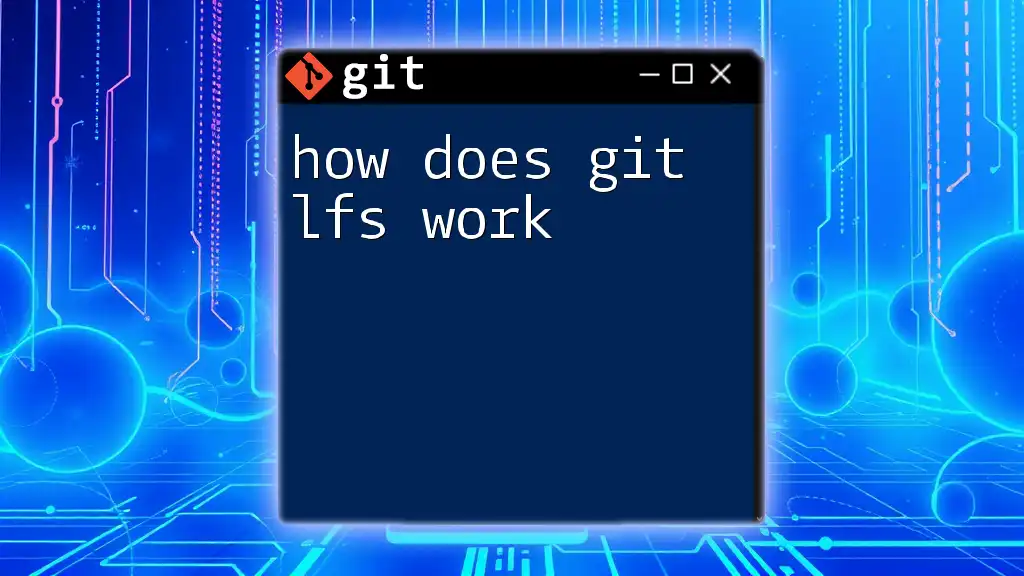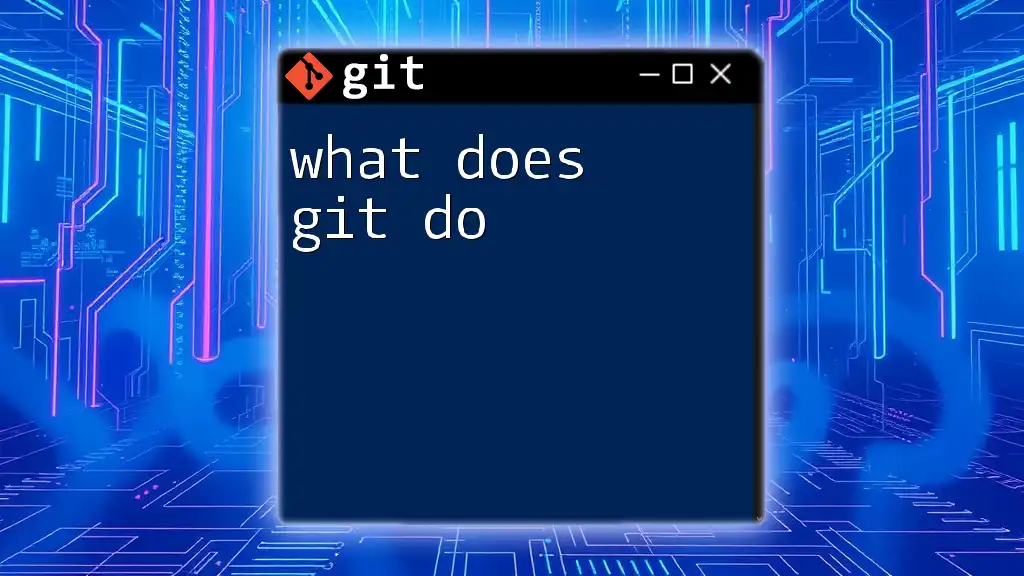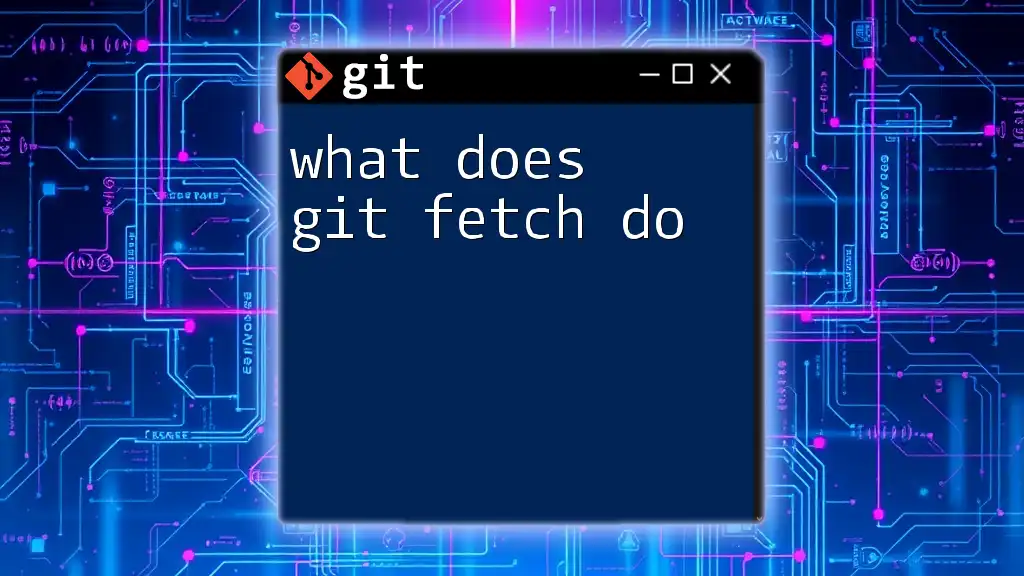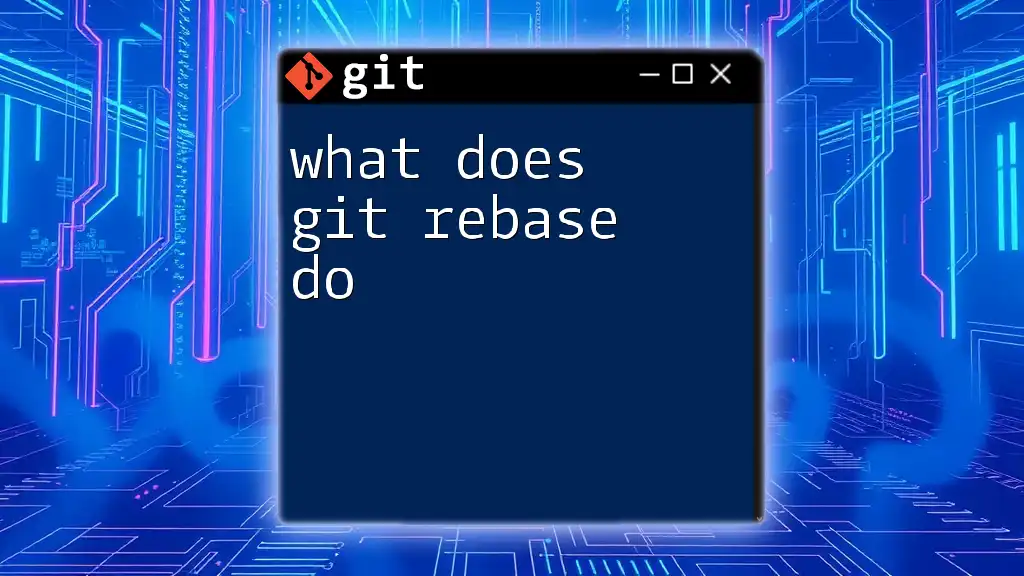Git LFS (Large File Storage) is an extension for Git that allows you to manage large files by replacing them with lightweight references in your Git repository while storing the actual files on a remote server.
Here's a quick code snippet to demonstrate how to track a large file using Git LFS:
git lfs install
git lfs track "*.psd"
git add .gitattributes
git add your-file.psd
git commit -m "Add large PSD file using Git LFS"
Understanding Git LFS
What is Git LFS?
Git Large File Storage (LFS) is an extension for Git that is specifically designed to handle large files more efficiently. Traditionally, Git is not optimized for managing large binary files, which can lead to slowed performance and bloated repository sizes. Git LFS addresses this limitation by replacing large files with lightweight “pointer” files within your Git repository. The actual content of the large files is stored separately on a remote Git LFS server.
Why Use Git LFS?
Limitations of standard Git
When using standard Git for large files, you may encounter several issues, including longer clone times and slower performance due to the increased size of the repository. This can be particularly problematic when working with teams, as syncing up large binary files can lead to inefficiencies and delays.
Advantages of Git LFS
By implementing Git LFS, teams can experience improved performance. The extension allows for faster downloads and uploads of large files because only the needed versions of those files are fetched, rather than the entire file history. This also means that team collaboration can occur more smoothly, as larger assets can be tracked without bogging down the entire version control system.
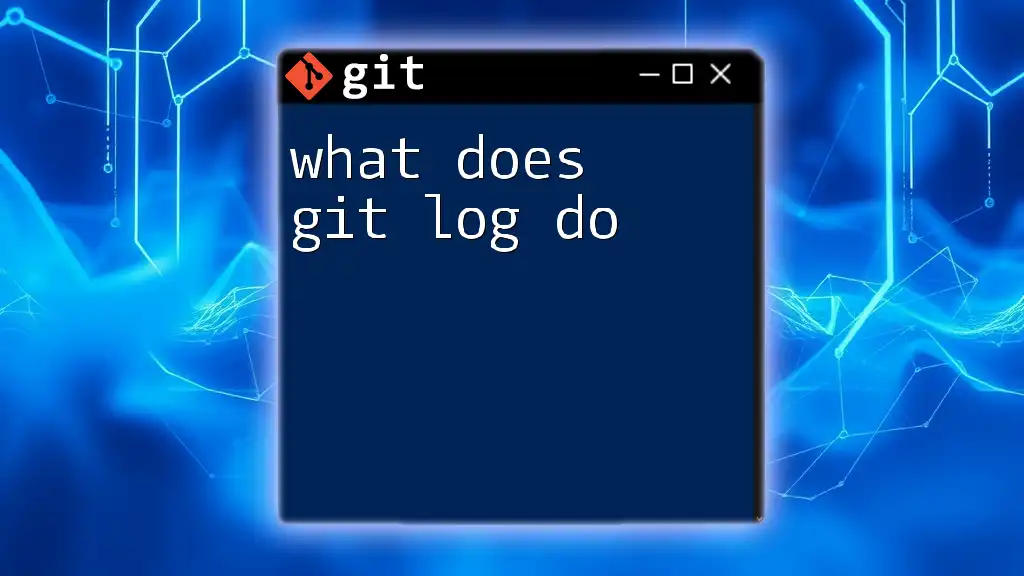
How Git LFS Works
Git LFS Workflow Overview
The Git LFS workflow involves tracking large files separately from the rest of your Git repository. When you want to add a large file to your project, you designate it for tracking with Git LFS. This pointer mechanism ensures that the actual file content is stored in a separate location, while your repository remains lightweight.
Installing Git LFS
To get started with Git LFS, you first need to install it. The installation process varies slightly depending on your operating system:
-
For macOS: You can install Git LFS using Homebrew with the command:
brew install git-lfs -
For Windows: You can download the Git LFS installer from the official Git LFS website.
-
For Linux: Installation can typically be handled via the package manager, such as:
sudo apt-get install git-lfs
After installation, you can verify that Git LFS is properly set up by running:
git lfs --version
Tracking Files with Git LFS
To manage large files with Git LFS, you will need to track them appropriately. The `.gitattributes` file in your Git repository helps specify which file types should be tracked using LFS.
To add large file types (for example, Photoshop files), you would include the following line in your `.gitattributes` file:
*.psd filter=lfs diff=lfs merge=lfs -text
You can also use the command line to track these files. For instance, to track all Photoshop files, you would run:
git lfs track "*.psd"
Now, any `.psd` files you add to your repository will be managed by Git LFS rather than standard Git.
Staging and Committing Files
When you add files tracked by Git LFS to your staging area, the workflow is similar to standard Git but with a minor difference. Use the command below to stage your changes:
git add <file.psd>
Once staged, you can commit your changes in the usual manner:
git commit -m "Add large PSD files"
Git LFS will handle the management of the files for you in the background, ensuring that they are stored efficiently.
Pushing and Pulling with Git LFS
Pushing large files is another area where Git LFS shines. When you push your changes to your remote repository, Git LFS automatically uploads the actual file contents to the appropriate LFS store.
Using the usual push command is all you need:
git push origin main
This command will ensure that LFS pointers are pushed to the Git repository while the actual files are uploaded to LFS storage. Similarly, when pulling changes, you can use:
git lfs pull
This command will fetch the actual LFS objects, ensuring you have the latest versions of the large files.

Managing Large Files in Git LFS
Listing Tracked Files
To see which files are currently being tracked by Git LFS in your repository, you can use the command:
git lfs ls-files
The output will provide you with a list of LFS-tracked files along with some metadata about each one.
Untracking Files
If you no longer want to manage certain files with Git LFS, you can untrack them. To do this, you'll need to edit the `.gitattributes` file, removing the line associated with the file types you wish to untrack.
You can also run the following command to untrack specific files directly:
git lfs untrack "*.psd"
Deleting Files in Git LFS
Deleting files managed by Git LFS requires care. To remove an LFS-tracked file, you first need to delete the pointer file and then commit that change:
git rm <file.psd>
git commit -m "Remove large PSD file"
To also remove the actual file from LFS storage, you might need to perform a cleanup depending on your specific requirements and setup, ensuring that both the pointer and the file are adequately removed.

Common Issues and Troubleshooting
Troubleshooting LFS Problems
While Git LFS generally simplifies handling large files, you may encounter issues such as authentication problems or missing files. Common error messages can often provide clues to resolve the situation. Ensuring you have the correct permissions set up on your remote LFS server will help mitigate many of these issues.
Best Practices for Using Git LFS
To make the most of Git LFS, consider the following best practices:
- Track only necessary large files: Avoid cluttering your repository with files that do not require LFS.
- Use LFS for files that change frequently: This maximizes performance benefits.
- Regularly clean up your LFS storage: You can remove obsolete file versions to maintain a lean repository.

Conclusion
In summary, Git LFS provides a robust solution for managing large files within your Git repositories. By understanding how Git LFS works and effectively integrating it into your workflow, you can significantly improve your version control experience when dealing with large binaries.
For more advanced features and detailed information, consider exploring the official Git LFS documentation. Implementing Git LFS can help streamline collaboration in your projects, making it an invaluable tool for teams working with large assets.

